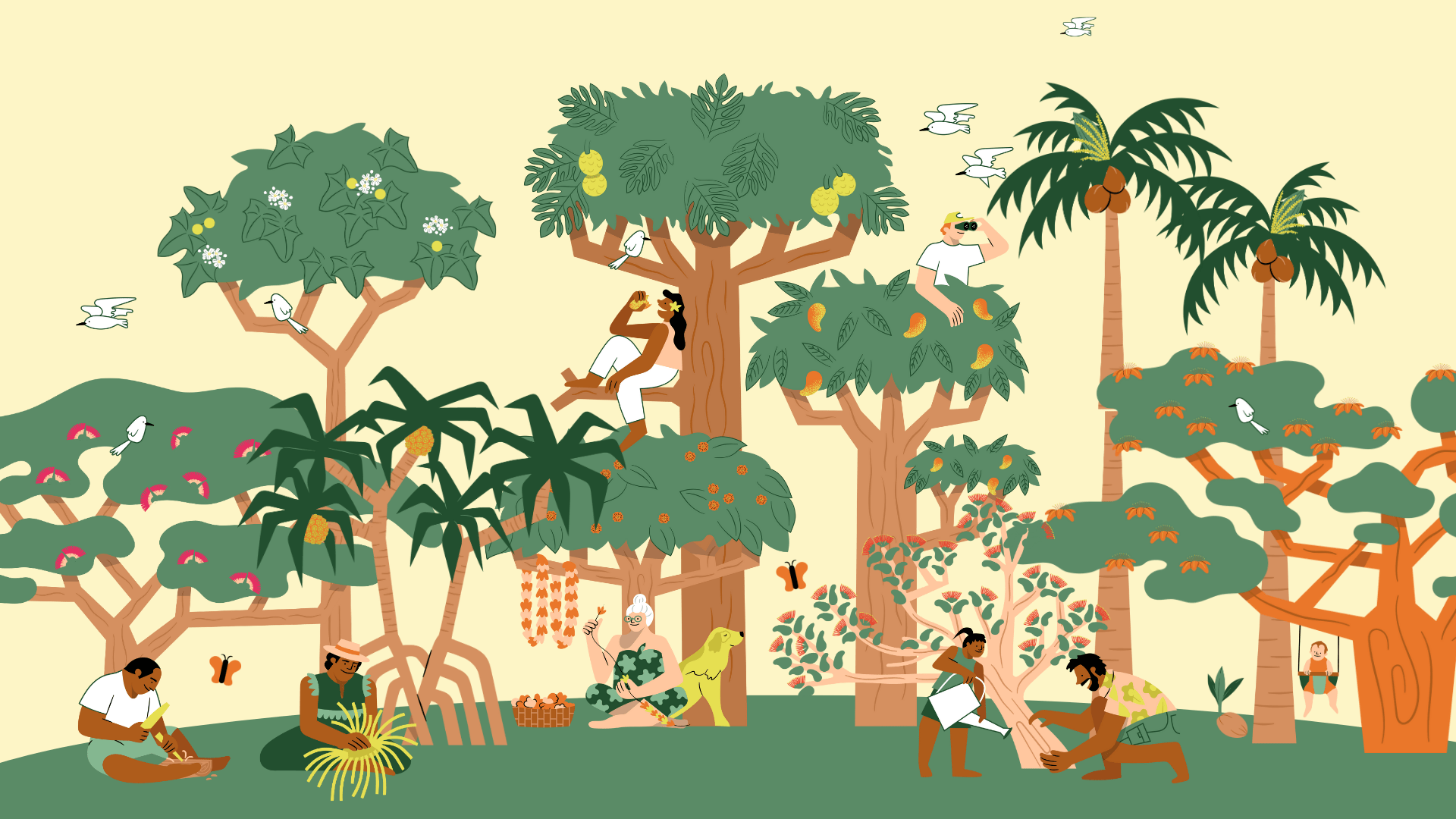When people plant a fruit tree, their thoughts often turn to the rewards: the promise of fresh fruit, and perhaps the vision of nourishing future generations. But what does it truly take to cultivate a tree that will bear fruit, and how can we begin to view these trees not just for the fruits they yield, but for the deeper potential they hold?
If you purchased a fruit tree at our recent plant sale at the South Shore Visitor Center on Kauaʻi, there’s a good chance it was grown by our horticulture staff member, Clifton Cardenas.
Using various techniques such as cuttings, air layers, and seeds, Clifton has propagated a diverse range of plants, including mountain apple, ice cream bean, mamey sapote, and more. In his propagation area, you might find rows of cuttings nestled in rooting trays, or young saplings just beginning to show fresh new growth.
“Propagation is just something I grew up around,” he says. “Before joining NTBG, I worked in other roles where I picked up different propagation techniques and experimented with different methods. A lot of it was trial and error—figuring things out on my own, practicing, and improving.”
The rewards of propagation go beyond the potential abundance of a single fruit tree; for Clifton, it’s about how that tree might one day become part of something bigger—something that not only nourishes people physically but also fosters deeper connections within the family and community.
“When someone buys a fruit tree at our plant sale, I imagine that one day that tree will grow so big that kids can climb the tree, build memories with it. Maybe they can even hang a tire swing from it (laughs).”
Like learning any skill, propagation comes with its challenges. Clifton explains that the most difficult part is not feeling a sense of failure when things don’t work out. “Not every cutting or air layer is going to take,” he says. “It’s part of the process.” Persistence and the willingness to keep trying, even after disappointments, are crucial to successfully propagating healthy, thriving plants.
Despite the challenges, the satisfaction of seeing a young plant put off new growth—and knowing that it could one day become an integral part of the family or community—makes the journey worthwhile.
Nurturing roots, building community
This sense of community isn’t limited to people. In tropical agroforestry systems, fruit trees are part of a larger, integrated system—a community of plants that work together to provide a range of economic, environmental, and social benefits.
In the Regenerative Organic Breadfruit Agroforest, numerous fruit trees, shrubs, crops, and other plants grow together as part of a thriving ecosystem.
In these systems, fruit trees contribute to a multi-layered canopy that helps regulate temperature, reduce erosion, and improve soil water retention. The diversity of fruit trees, shrubs, crops, and other plants is key to maintaining a healthy, balanced system. This variety supports year-round harvests, aids in pest and disease management, and strengthens the system’s overall resilience.
Even for home growers with a small residential yard, agroforestry principles can be applied on a smaller scale. With just one or two fruit trees, practices like companion planting, mulching, and soil enhancement can transform a small space into a thriving, biodiverse ecosystem.
In other words, the fruit tree you picked up at a plant sale holds much more than just the fruit it will provide. Once planted, it can become part of a shared story—a community of plants and people. All it needs is a little help to realize its full potential.

Celebrate by joining us at a Grow Aloha plant adoption or exploring events and activities happening near you.
The Breadfruit Institute is implementing a model in sustainable and regenerative organic agriculture to promote food security and a healthy environment. Known as the Regenerative Organic Breadfruit Agroforestry (ROBA) demonstration, this 2 acre plot in McBryde Garden is home to over 100 different plant species and varieties, including numerous fruit trees. Meet five fruit trees that thrive in ROBA!
We can’t talk about ROBA without mentioning breadfruit! A staple crop throughout Oceania, breadfruit is a key tree in traditional agroforestry systems. Its tall canopy is ideal for creating a multi-layered system.
ROBA is home to several varieties of breadfruit, which helps create a robust and resilient agroforest.
Cacao thrives as an understory tree in ROBA, benefiting from the agroforest’s wind protection and partial shade.
Starfruit’s compact size makes it an ideal understory tree in an agroforestry system.
Citrus trees are an excellent choice for agroforestry systems because they can thrive in poor soil, making them particularly beneficial in areas where the land has been degraded.
Calamansi and Meyer lemon (pictured above) are just two examples of citrus trees that thrive in ROBA.